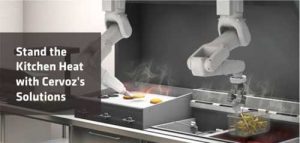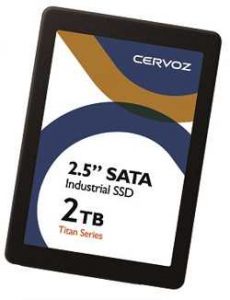Cervoz T385 and T376 SSDs Tackle Automated Kitchen Needs With Wide Temperature
-40˚C to 85˚C
This is a Press Release edited by StorageNewsletter.com on May 10, 2021 at 2:31 pmCervoz Technology Co., Ltd. is focusing its making automated kitchens functional with its embedded solutions.
Its flash and MEC products are designed to create an ecosystem of robots that work with speed and precision all while being kitchen-proofed vs. the heat, spills and other elements typically found in a cooking space.
Covid-19 has accelerated the adoption of robots in kitchens. These automated or smart kitchens provide an added level of safety during a pandemic because of the minimal human presence in the kitchen. In post-Covid times, these kitchens can continue to be cost-effective to restaurants and allow chefs, in partially automated kitchens, to work better with technical assistance.
The solutions can stand the heat and anything else that might be found inside a typical kitchen. The SSDs in the T385 and the T376 families are both available in the wide temperature version that can withstand temperatures of -40˚C to 85˚C. They can be equipped with conformal coating, company‘s technology to protect component parts from moisture, dust, chemicals, and sunlight.
What sets the 2 families of SSDs apart is their intended function. The T385 comes with a DRAM buffer, so it is also for kitchens that may be taking in large and complex orders. The DRAM buffer improves both the flash product’s performance , endurance.
The T376 comes with the firm’s Powerguard, which protects vs. sudden power loss. If the kitchen is one that produces packaged foods around the clock for vending machines or convenience stores, then the T376 can help save any data being processed in the event of a power outage. This in turn ensures that everything will return to smooth operations once power is back on.
To avoid any unnecessary network cables in the kitchen, the M.2 WiFi card in for automated kitchen applications. The MEC product allows for a stable network connection to transmit instructions and data to and from the cooking robots.

















 Subscribe to our free daily newsletter
Subscribe to our free daily newsletter


